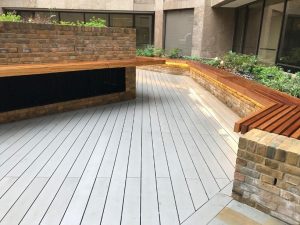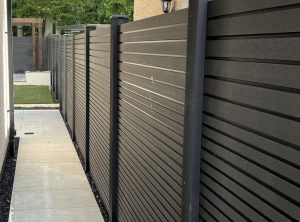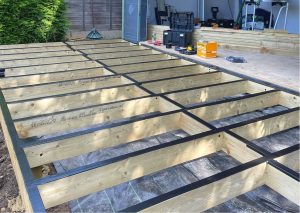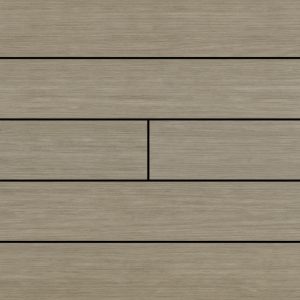Are you looking to enhance your property’s privacy and security? Installing composite fencing might be the perfect DIY project for you. Whether you’re an experienced DIY enthusiast or tackling your first major outdoor project, composite fencing offers a rewarding way to transform your outdoor space.
In this article, we’ll walk you through everything you need to know about planning and executing your composite fencing project. From selecting the right materials and tools to installation techniques and maintenance tips, we’ve got you covered.
Why Should You Choose Composite Fencing for Your DIY Project?
Unlike traditional wood fencing, composite fencing is manufactured from a combination of recycled wood fibres and recycled plastic, creating a material that offers exceptional durability while maintaining a natural wood-like appearance. The benefits of choosing composite fencing for your DIY project include:
Superior Durability and Weather Resistance
Composite fencing stands up remarkably well to the UK’s challenging weather conditions. It won’t rot, warp, or split like traditional wooden fencing, and it’s resistant to both extreme heat and freezing conditions.
Environmentally Friendly Construction
Made from recycled materials, composite fencing is an environmentally friendly choice. This sustainable option helps reduce waste while providing a long-lasting fencing solution.
Low Maintenance Requirements
Unlike traditional wood fencing that requires regular painting, staining, and treating, composite fencing only needs occasional cleaning with soap and water to maintain its appearance.
Aesthetic Appeal
Available in a range of colours and styles, composite fencing offers the natural look of wood without the associated maintenance. The colour is consistent throughout the material, meaning it won’t fade or require repainting.
What Tools and Materials Will You Need?
Before starting your DIY composite fencing project, ensure you have all the necessary tools and materials:
Essential Tools:
- Post hole digger
- Spirit level
- Tape measure
- Power drill
- Saw suitable for composite materials
- String line
- Rubber mallet
- Spade
- Wheelbarrow (for concrete mixing)
Required Materials:
- Composite fence panels
- Composite or aluminium posts
- Post caps
- Concrete mix
- Gravel for drainage
- Fixings and brackets (specific to your chosen system)
- String for marking out
How Do You Plan Your Composite Fencing Project?
Proper planning is vital for ensuring your DIY fencing project runs smoothly:
1. Check Boundaries and Regulations
First, verify your property boundaries and check local planning regulations. It’s crucial to ensure you’re installing your fence in the correct location and adhering to any height restrictions or planning requirements.
2. Measure Your Space
Carefully measure the area where you plan to install your fence. Remember to account for:
- Total length of the fence line
- Required height
- Post spacing (typically 1.8m centres for composite fencing)
- Gate locations if needed
3. Calculate Materials
Based on your measurements, calculate the number of panels, posts, and fixings needed. Always order approximately 10% extra materials to account for cuts and potential mistakes.
What’s the Step-by-Step Installation Process?
Installing composite fencing is a straightforward process when approached methodically:
1. Mark Out Your Fence Line
- Use string lines to mark where your fence will run
- Mark post positions at appropriate intervals (typically 1.8m)
- Ensure your lines are straight and corners are square
2. Install Your Posts
- Dig holes approximately 600mm deep (or one-third of the post height)
- Add 100mm of gravel for drainage
- Position posts using a spirit level
- Mix and pour concrete around posts
- Allow 24-48 hours for concrete to set fully
3. Install Fence Panels
- Start from a corner or end post
- Ensure panels are level before fixing
- Leave 5mm expansion gaps between panels
- Use appropriate fixings for your chosen system
4. Add Finishing Touches
- Install post caps
- Check all fixings are secure
- Clean any marks or dirt from panels
How Do You Maintain Your Composite Fence?
Maintaining your composite fence is straightforward compared to traditional wooden fencing. Regular cleaning with simple soap and water is typically all that’s needed to keep your fence looking its best. When cleaning, use a soft brush and gentle pressure to avoid any surface abrasion. For stubborn stains or marks, specially formulated composite cleaners can be used, but always test these on a small, inconspicuous area first.
It’s important to conduct periodic inspections of your fence, particularly after extreme weather conditions. During these checks, examine all fixings and tighten any that may have loosened over time.
Common Challenges and Solutions
When installing composite fencing, you might encounter these common challenges:
Uneven Ground
Grading the ground can create a level surface for installation, though this isn’t always practical or desirable. Alternatively, stepping your panels down the slope can create an attractive solution while maintaining the fence’s effectiveness.
Thermal Expansion
The material naturally expands and contracts with temperature changes, making it vital to follow manufacturer guidelines regarding spacing. Installing your fence during moderate temperatures provides the best results, as extreme heat or cold can affect the material’s properties during installation.
Post stability
Post stability can sometimes prove challenging, particularly in soft ground conditions. In these situations, using additional concrete and extending the depth of your post holes can provide extra stability. It’s also worth considering the use of metal post supports or concrete spurs for additional reinforcement.
Why Choose Ecoscape for Your Composite Fencing Project?
Ecoscape offers a comprehensive range of high-quality composite fencing products designed specifically for the UK market. Our fencing solutions combine durability with aesthetic appeal, providing:
- Multiple colour options to suit any outdoor space
- Complete fencing systems including posts and accessories
- Environmentally conscious materials
- Extended warranty protection
Ready to start your DIY composite fencing project? Explore our full range of composite fencing products or contact us today – our team is always available to provide expert advice and support throughout your project.














